Study of the Appropriate Well Types and Parameters for the Safe and Efficient Production of Marine Gas Hydrates in Unconsolidated Reservoirs
Abstract
1. Introduction
2. Methodology and Procedures
3. Results and Discussion
3.1. Formation Subsidence of Unconsolidated Hydrate Reservoirs during Production
3.2. Sensitivity to Formation Parameters
3.2.1. Effect of Buried Depth
3.2.2. Effect of Hydrate Saturation
3.2.3. Effect of Formation Porosity
3.3. Sensitivity to Production Parameters
3.3.1. Effect of Bottom Hole Pressure
3.3.2. Effect of Horizontal Length
3.3.3. Effect of Injection Heat
3.4. Appropriate Well Types and Parameters
4. Conclusions
Author Contributions
Funding
Institutional Review Board Statement
Informed Consent Statement
Data Availability Statement
Acknowledgments
Conflicts of Interest
References
- Sloan, E.D.; Koh, C.A. lathrate Hydrates of Natural Gases, 3rd ed.; CRC Press: Boca Raton, FL, USA, 2008; pp. 1–5. [Google Scholar]
- Moridis, G.J.; Collett, T.S.; Pooladi-Darvish, M.; Hancock, S.H.; Santamarina, C.; Boswell, R.; Kneafsey, T.J.; Rutqvist, J.; Kowalsky, M.B.; Reagan, M.T.; et al. Challenges, Uncertainties, and Issues Facing Gas Production From Gas-Hydrate Deposits. SPE Reserv. Evaluation Eng. 2011, 14, 76–112. [Google Scholar] [CrossRef]
- Yuan, Y.L. Numerical Simulation of Exploitation Potential and Mechanical Stability of Marine Natural Gas Hydrate Depressurization. Ph.D. Thesis, Jilin University, Changchun, China, 2019. [Google Scholar]
- Hassanpouryouzband, A.; Joonaki, E.; Farahani, M.V.; Takeya, S.; Ruppel, C.; Yang, J.; English, N.J.; Schicks, J.M.; Edlmann, K.; Mehrabian, H.; et al. Gas hydrates in sustainable chemistry. Chem. Soc. Rev. 2020, 49, 5225–5309. [Google Scholar] [CrossRef]
- Ruan, X.; Li, X.-S.; Xu, C.-G. A review of numerical research on gas production from natural gas hydrates in China. J. Nat. Gas Sci. Eng. 2020, 85, 103713. [Google Scholar] [CrossRef]
- Zander, T.; Choi, J.C.; Vanneste, M.; Berndt, C. Potential Impacts of Gas Hydrate Exploitation on Slope Stability—A Study from the Danube Fan, Black SEA. In Proceedings of the Near Surface Geoscience 2016-Second Applied Shallow Marine Geophysics Conference, Barcelona, Spain, 4–8 September 2016. [Google Scholar] [CrossRef]
- Matsuda, H.; Yamakawa, T.; Sugai, Y.; Sasaki, K. Gas Production from Offshore Methane Hydrate Layer and Seabed Subsidence by Depressurization Method. Engineering 2016, 8, 353–364. [Google Scholar] [CrossRef][Green Version]
- Hyodo, M.; Li, Y.; Yoneda, J.; Nakata, Y.; Yoshimoto, N.; Nishimura, A. Effects of dissociation on the shear strength and deformation behavior of methane hydrate-bearing sediments. Mar. Pet. Geol. 2014, 51, 52–62. [Google Scholar] [CrossRef]
- Hyodo, M.; Yoneda, J.; Yoshimoto, N.; Nakata, Y. Mechanical and dissociation properties of methane hydrate-bearing sand in deep seabed. Soils Found. 2013, 53, 299–314. [Google Scholar] [CrossRef]
- Grover, T.; Holditch, S.A.; Moridis, G. Analysis of Reservoir Performance of Messoyakha Gas Hydrate Field. In Proceedings of the Eighteenth International Offshore and Polar Engineering Conference, Vancouver, BC, Canada, 6 July 2008. [Google Scholar] [CrossRef]
- Moridis, G.J.; Collett, T.S.; Dallimore, S.R.; Satoh, T.; Hancock, S.; Weatherill, B. Numerical studies of gas production from several CH4 hydrate zones at the Mallik site, Mackenzie Delta, Canada. J. Pet. Sci. Eng. 2004, 43, 219–238. [Google Scholar] [CrossRef]
- Yamamoto, K.; Dallimore, S. Aurora-JOGMEC-NRCan Mallik 2006–2008 gas hydrate research project progress. Nat. Gas Oil 2008, 304, 285–4541. [Google Scholar]
- Collett, T.S.; Boswell, R.; Lee, M.W.; Anderson, B.J.; Rose, K.; Lewis, K.A. Evaluation of Long-Term Gas Hydrate Production Testing Locations on the Alaska North Slope. SPE Reserv. Eval. Eng. 2012, 15, 243–264. [Google Scholar] [CrossRef]
- Boswell, R. Japan completes first offshore methane hydrate production test—methane successfully produced from deepwater hydrate layers. Cent. Nat. Gas Oil 2013, 412, 386–7614. [Google Scholar]
- Konno, Y.; Fujii, T.; Sato, A.; Akamine, K.; Naiki, M.; Masuda, Y.; Yamamoto, K.; Nagao, J. Key Findings of the World’s First Offshore Methane Hydrate Production Test off the Coast of Japan: Toward Future Commercial Production. Energy Fuels 2017, 31, 2607–2616. [Google Scholar] [CrossRef]
- Zhou, S.; Zhao, J.; Li, Q.; Chen, W.; Zhou, J.; Wei, N.; Guo, P.; Sun, W. Optimal design of the engineering parameters for the first global trial production of marine natural gas hydrates through solid fluidization. Nat. Gas Ind. B 2018, 5, 118–131. [Google Scholar] [CrossRef]
- Li, J.-F.; Ye, J.-L.; Qin, X.-W.; Qiu, H.-J.; Wu, N.-Y.; Lu, H.-L.; Xie, W.-W.; Lu, J.-A.; Peng, F.; Xu, Z.-Q.; et al. The first offshore natural gas hydrate production test in South China Sea. China Geol. 2018, 1, 5–16. [Google Scholar] [CrossRef]
- Ye, J.L.; Qin, X.W.; Xie, W.W.; Lu, H.L.; Ma, B.J.; Qiu, H.J.; Bian, H. The second natural gas hydrate production test in the South China Sea. China Geol. 2020, 3, 197–209. [Google Scholar] [CrossRef]
- Li, S. Numerical simulation of gas hydrate depressurization and thermal injection in mining process. Master’s Thesis, Harbin Engineering University, Harbin, China, 2017. [Google Scholar]
- Merey, S.; Sinayuc, C. Numerical simulations for short-term depressurization production test of two gas hydrate sections in the Black Sea. J. Nat. Gas Sci. Eng. 2017, 44, 77–95. [Google Scholar] [CrossRef]
- Chen, C.; Yang, L.; Jia, R.; Sun, Y.; Guo, W.; Chen, Y.; Li, X. Simulation Study on the Effect of Fracturing Technology on the Production Efficiency of Natural Gas Hydrate. Energies 2017, 10, 1241. [Google Scholar] [CrossRef]
- Zheng, R.C.; Yin, Z.; Khoo, B.C.; Linga, P. E Enhanced Gas Recovery from Water Saturated Hydrate Bearing Sediments Using Horizontal Wellbore. In Proceedings of the Offshore Technology Conference Asia, Kuala Lumpur, Malaysia, 20 March 2018. [Google Scholar] [CrossRef]
- Zhang, P.; Tian, S.; Zhang, Y.; Li, G.; Zhang, W.; Khan, W.A.; Ma, L. Numerical simulation of gas recovery from natural gas hydrate using multi-branch wells: A three-dimensional model. Energy 2020, 220, 119549. [Google Scholar] [CrossRef]
- Jin, G.; Xu, T.; Xin, X.; Wei, M.; Liu, C. Numerical evaluation of the methane production from unconfined gas hydrate-bearing sediment by thermal stimulation and depressurization in Shenhu area, South China Sea. J. Nat. Gas Sci. Eng. 2016, 33, 497–508. [Google Scholar] [CrossRef]
- Feng, J.-C.; Li, X.; Li, G.; Li, B.; Chen, Z.-Y.; Wang, Y. Numerical Investigation of Hydrate Dissociation Performance in the South China Sea with Different Horizontal Well Configurations. Energies 2014, 7, 4813–4834. [Google Scholar] [CrossRef]
- Gong, B.; Jiang, Y.J.; Wang, G.; Huang, N. Prediction of seabed subsidence from gas hydrate exploitation in the South China Sea. J. Shandong Univ. Sci. Technol. Nat. Sci. 2015, 34, 61–68. [Google Scholar] [CrossRef]
- Wan, Y.Z.; Wu, N.Y.; Hu, G.W.; Xin, X.; Jin, G.R.; Liu, C.L.; Chen, Q. Reservoir stability during gas hydrate depressurization exploitation in Shenhu area, South China Sea. Nat. Gas Ind. 2018, 38, 117–128. (In Chinese) [Google Scholar] [CrossRef]
- Jin, G.; Lei, H.; Xu, T.; Xin, X.; Yuan, Y.; Xia, Y.; Juo, J. Simulated geomechanical responses to marine methane hydrate recovery using horizontal wells in the Shenhu area, South China Sea. Mar. Pet. Geol. 2018, 92, 424–436. [Google Scholar] [CrossRef]
- Li, L.L.; Yang, J.; Lu, B.P.; Ke, K.; Wang, L.; Chen, K.J. Research on stratum settlement and wellhead stability in deep water during hydrate production testing. Pet. Drill. Tech. 2020, 48, 61–68. (In Chinese) [Google Scholar] [CrossRef]
- Lee, T.; Lee, J.Y.; Ahn, T.; Son, H.A. Numerical Simulation of Gas Hydrate Production Using the Cyclic Depressurization Method in the Ulleung Basin of the Korea East Sea. Appl. Sci. 2021, 11, 9748. [Google Scholar] [CrossRef]
- Sun, J.; Wu, S.G.; Zhu, L.Q.; Liu, Y.R.; Sun, Z.Y. Characteristics and influencing factors of seabed subsidence in gas hydrate depressions mining. J. Cent. South Univ. Sci. Technol. 2022, 53, 1033–1046. [Google Scholar]
- Chaves, G. Simulation of CO2 sequestration in deep saline aquifers. Master’s Thesis, New Mexico Institute of Mining and Technology, Socorro, NM, USA, 2011. [Google Scholar]
- Janicki, G.; Schlüter, S.; Hennig, T.; Lyko, H.; Deerberg, G. Simulation of Methane Recovery from Gas Hydrates Combined with Storing Carbon Dioxide as Hydrates. J. Geol. Res. 2011, 2011, 1–15. [Google Scholar] [CrossRef]
- Moridis, G.J.; Sloan, E.D. Gas production potential of disperse low-saturation hydrate accumulations in oceanic sediments. Energy Convers. Manag. 2007, 48, 1834–1849. [Google Scholar] [CrossRef]
- Yokoyama, T.; Shimoyama, M.; Matsuda, S.; Tago, K.; Takeshima, J.; Nakatsuka, Y. Monitoring system of seafloor subsidence for methane hydrate production test. In Proceedings of the SPWLA 18th Formation Evaluation Symposium of Japan, Chiba, Japan, 27 September 2012. [Google Scholar]
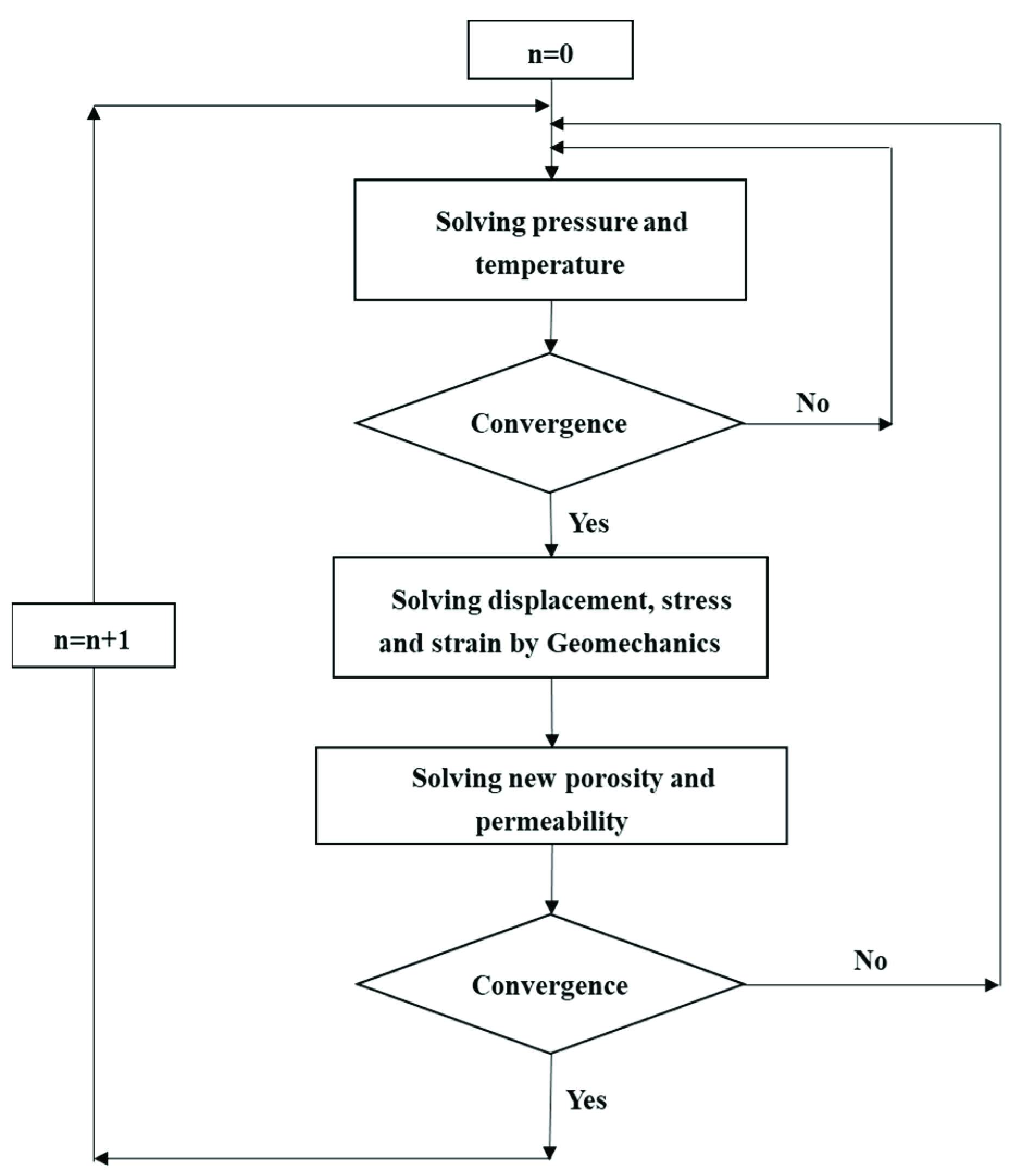
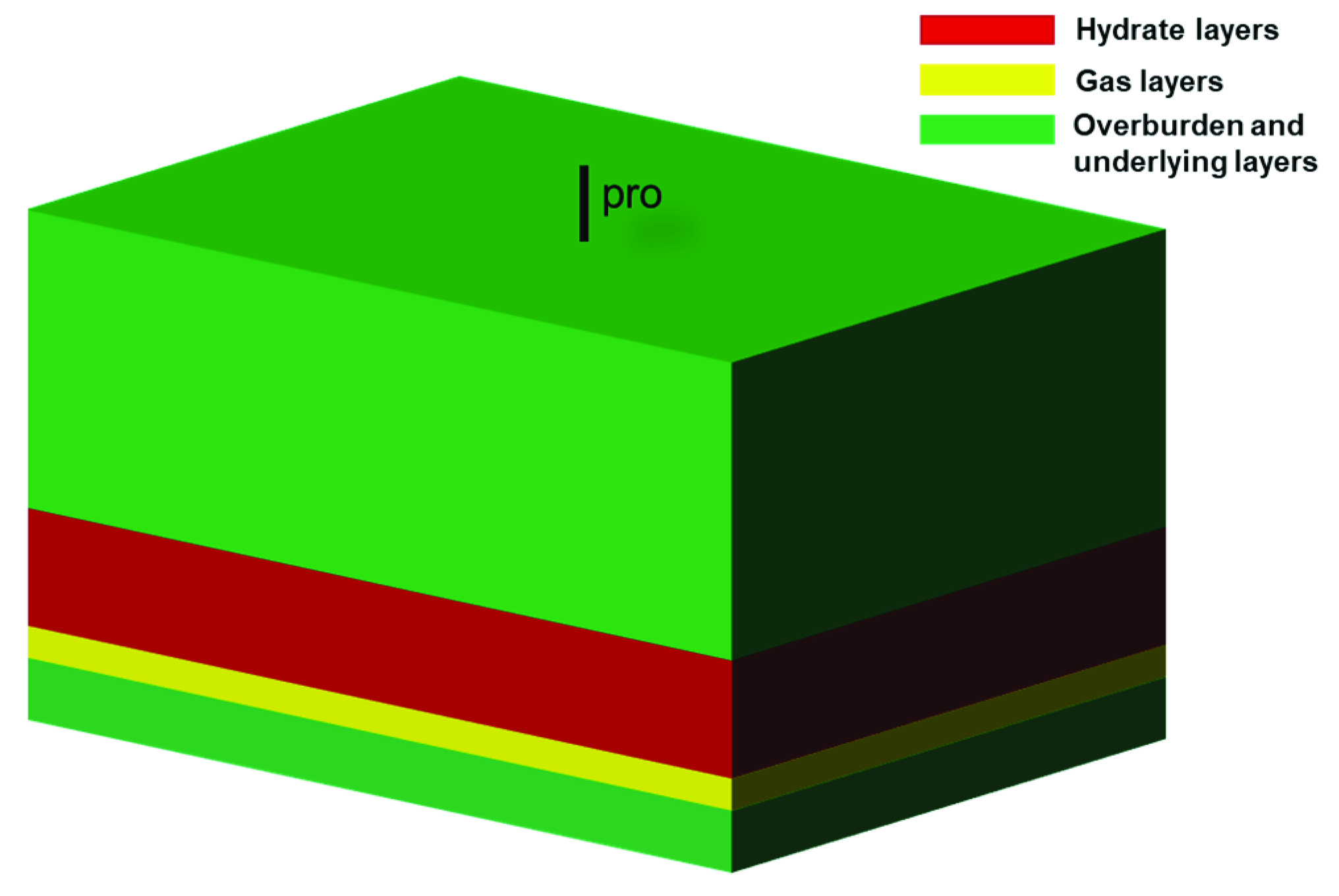
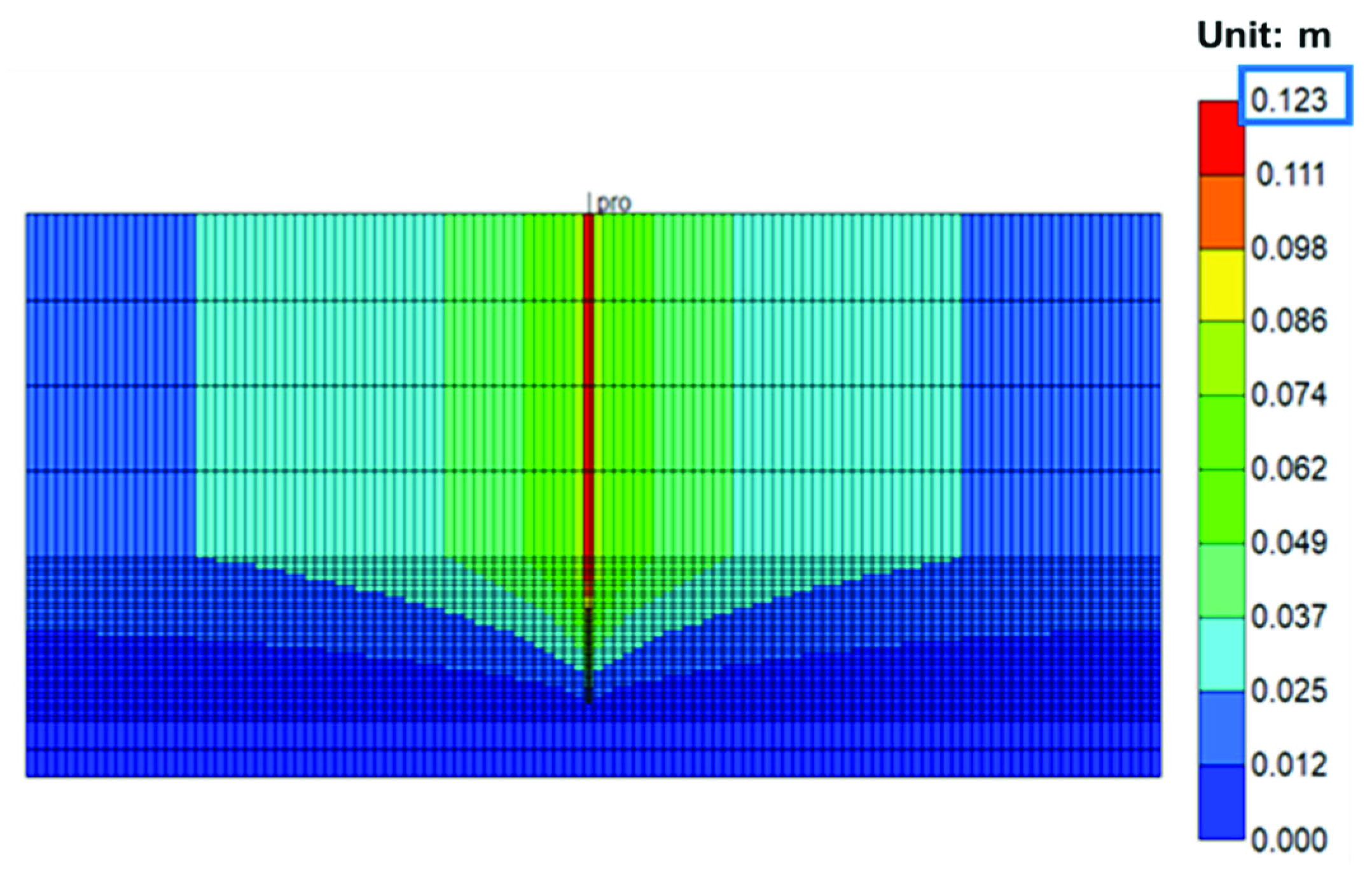
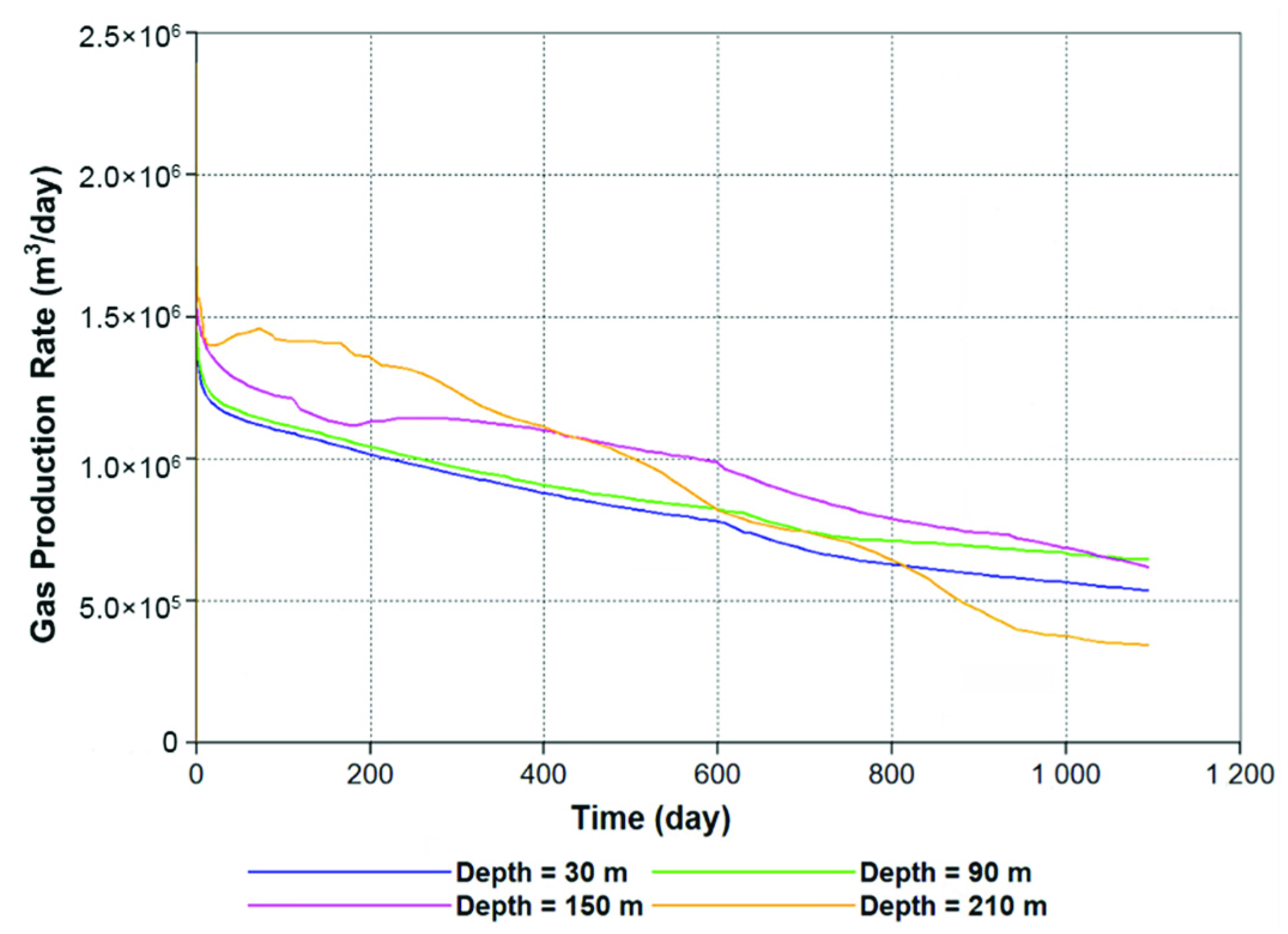
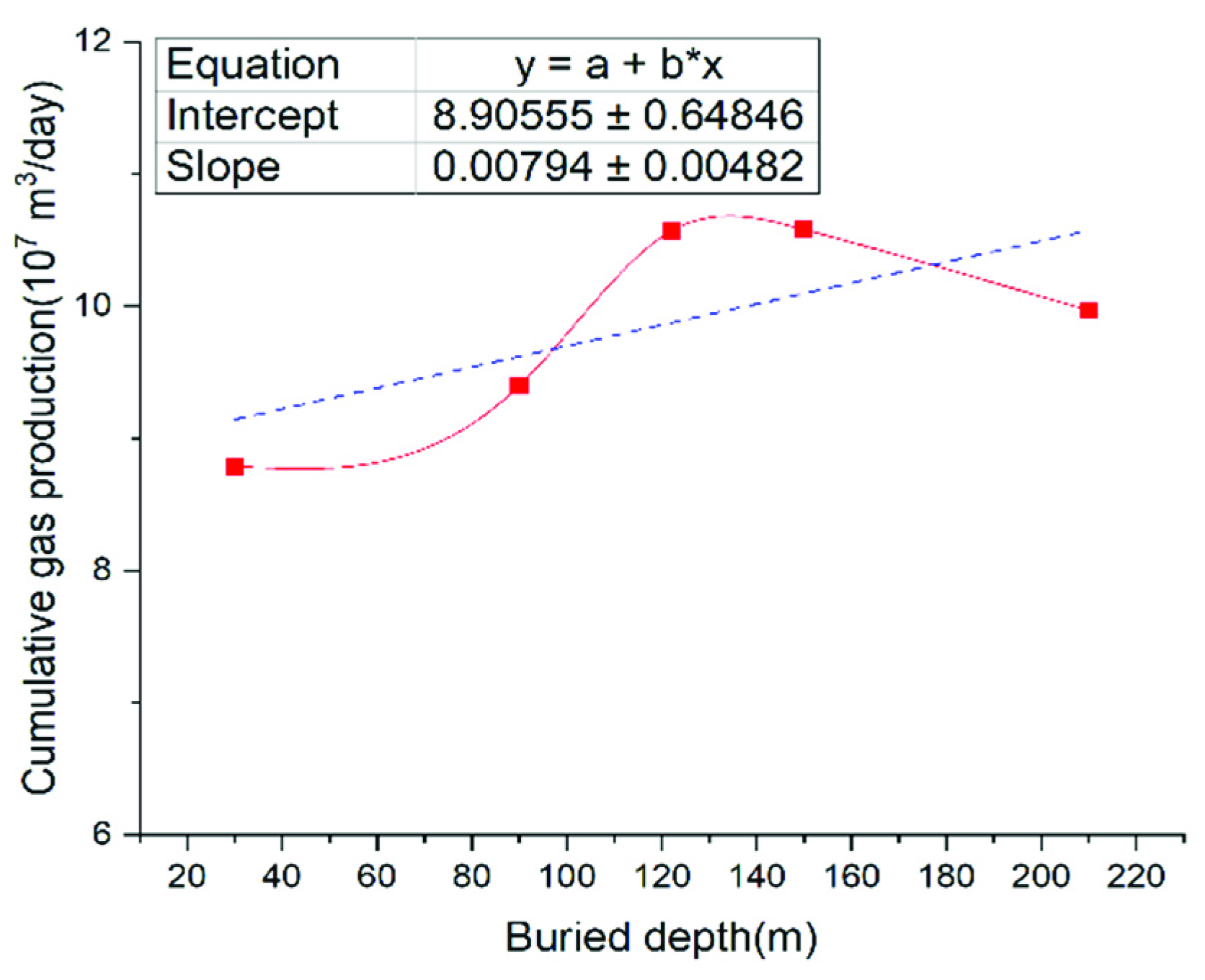
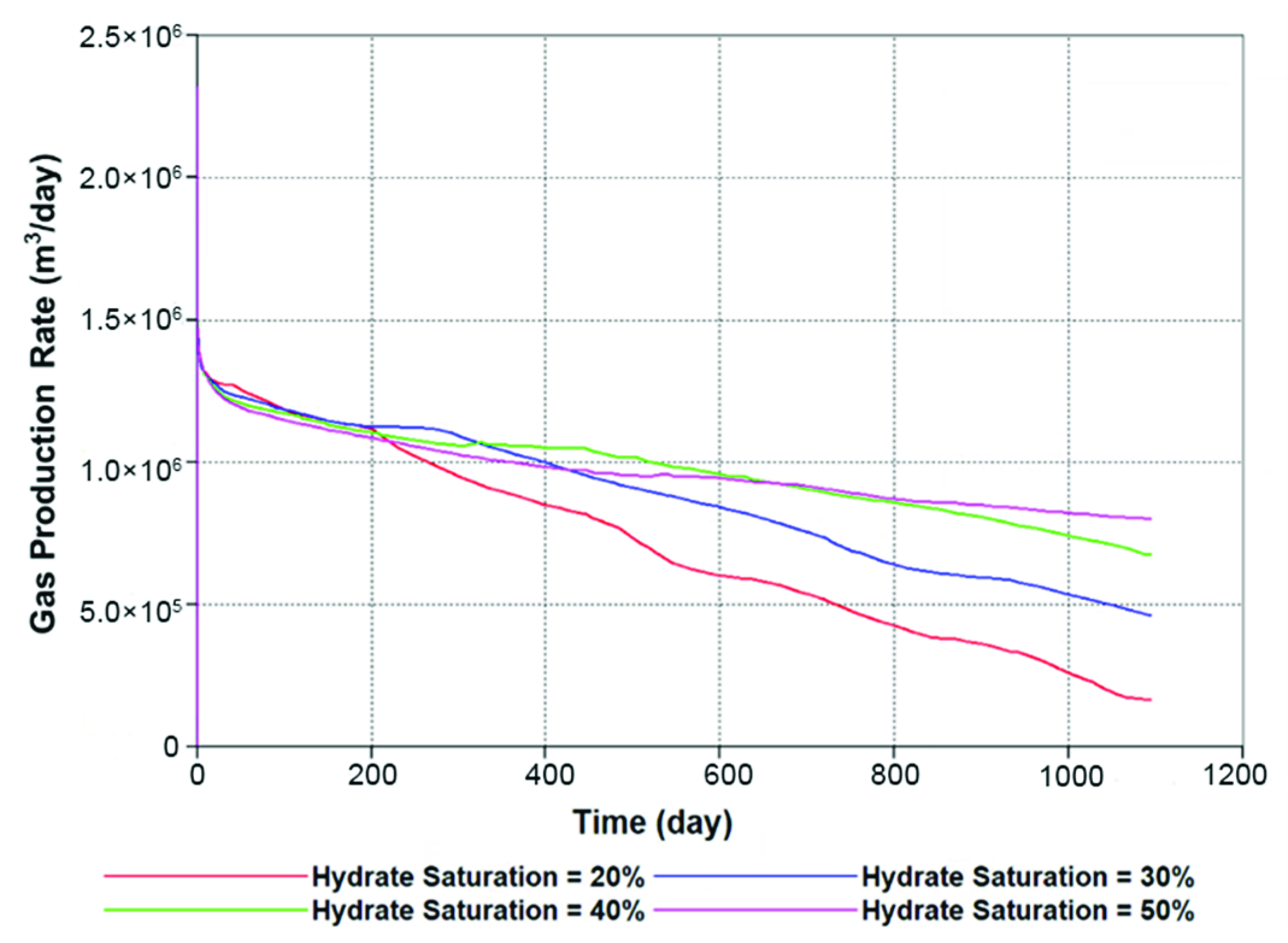
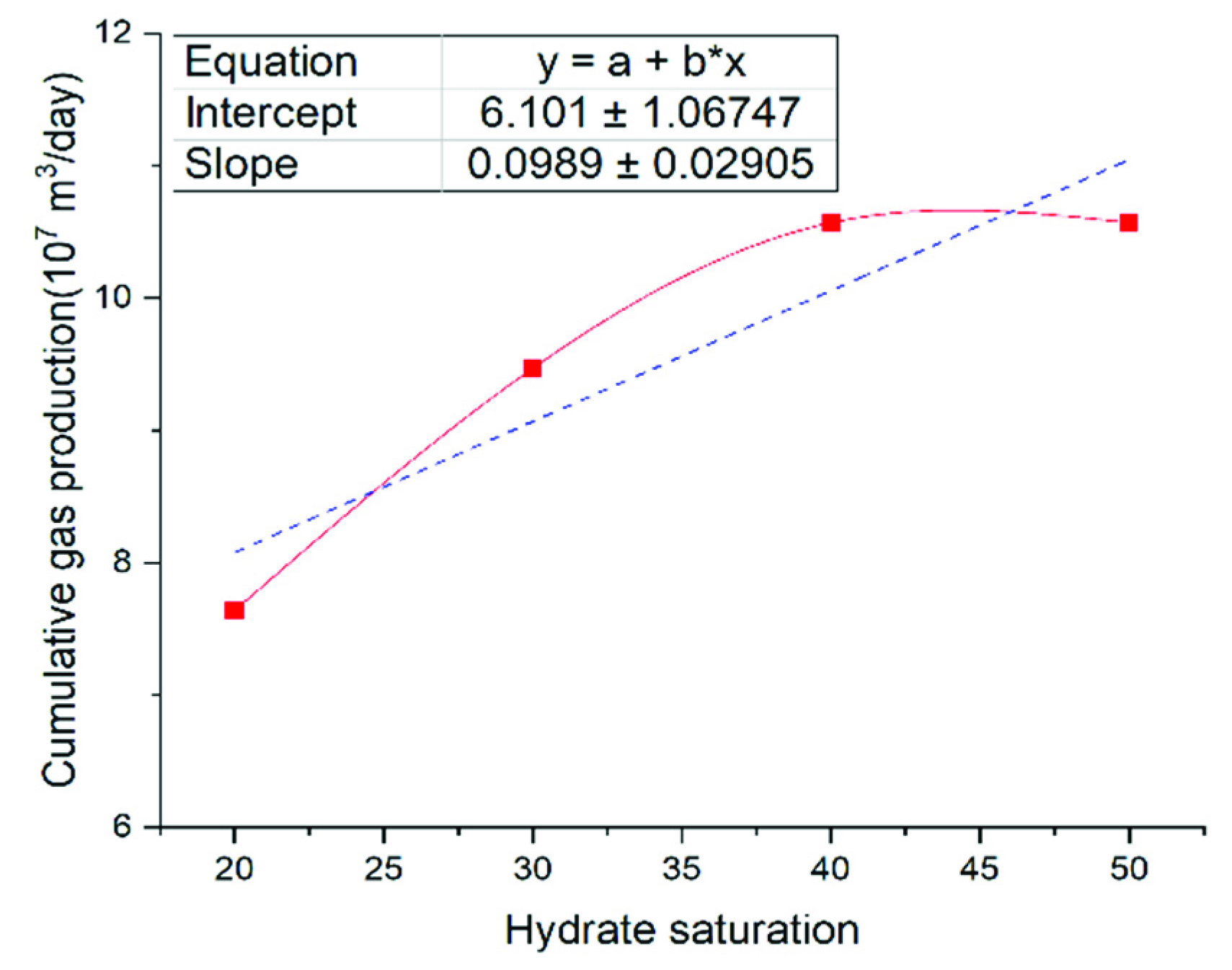
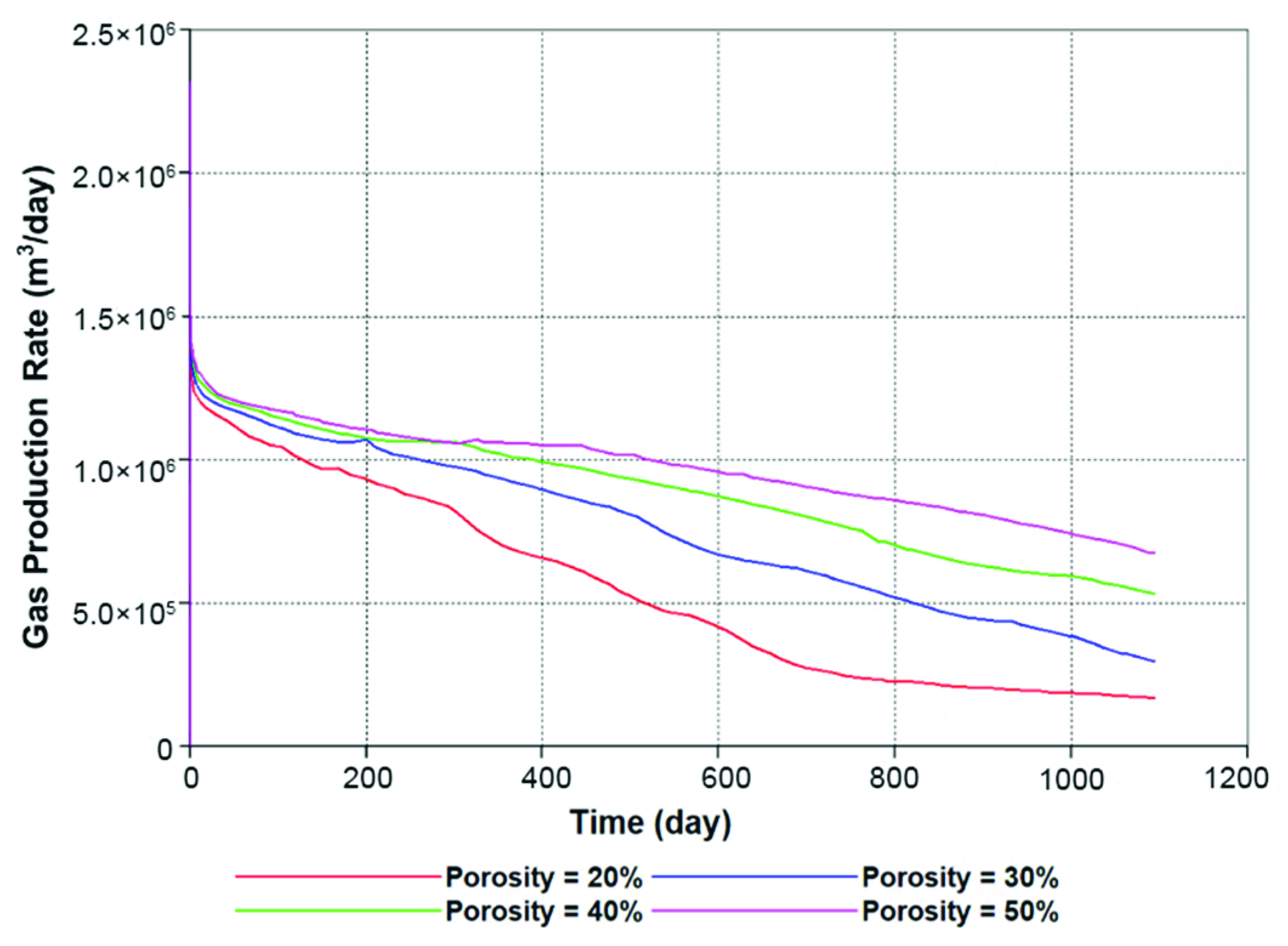
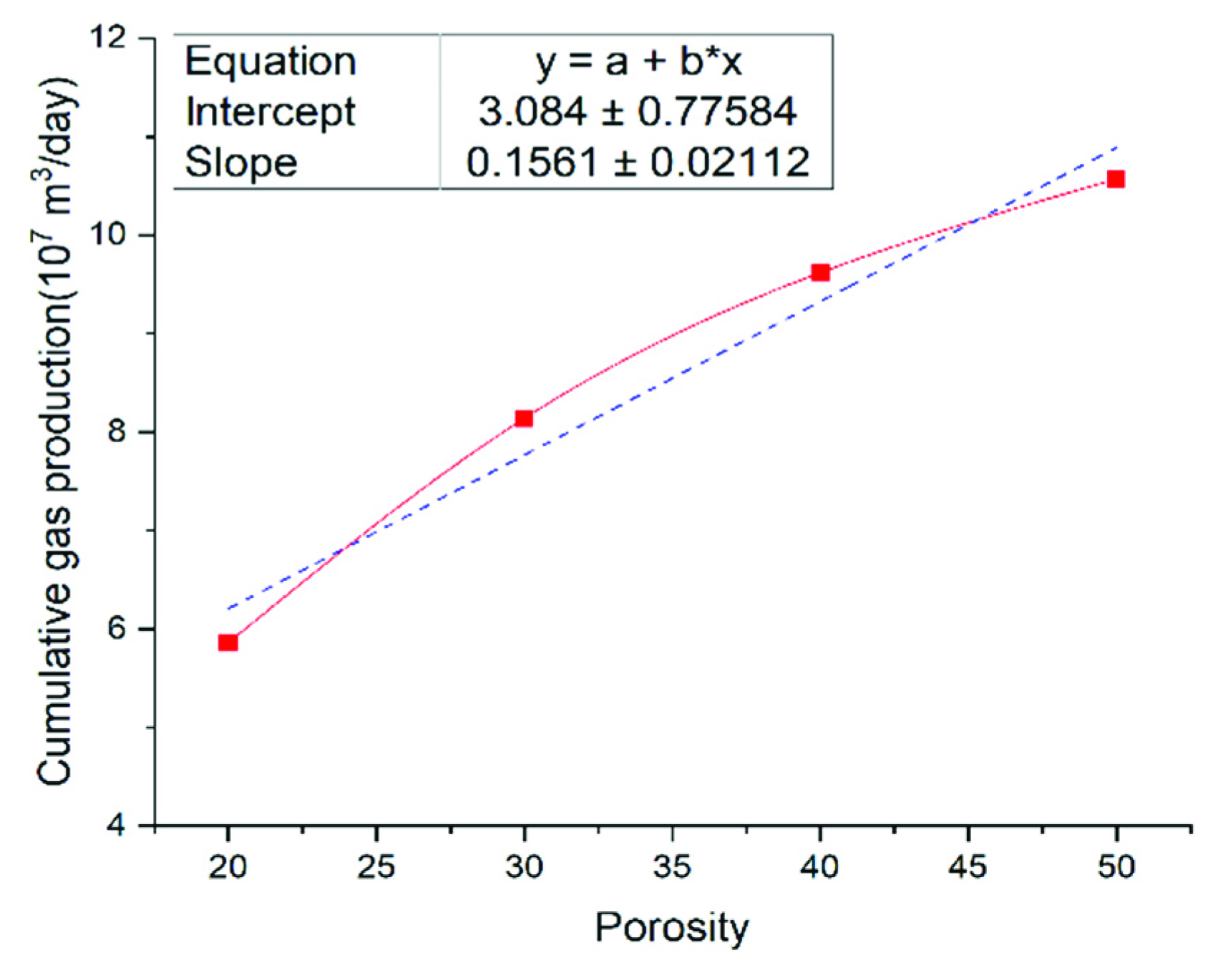
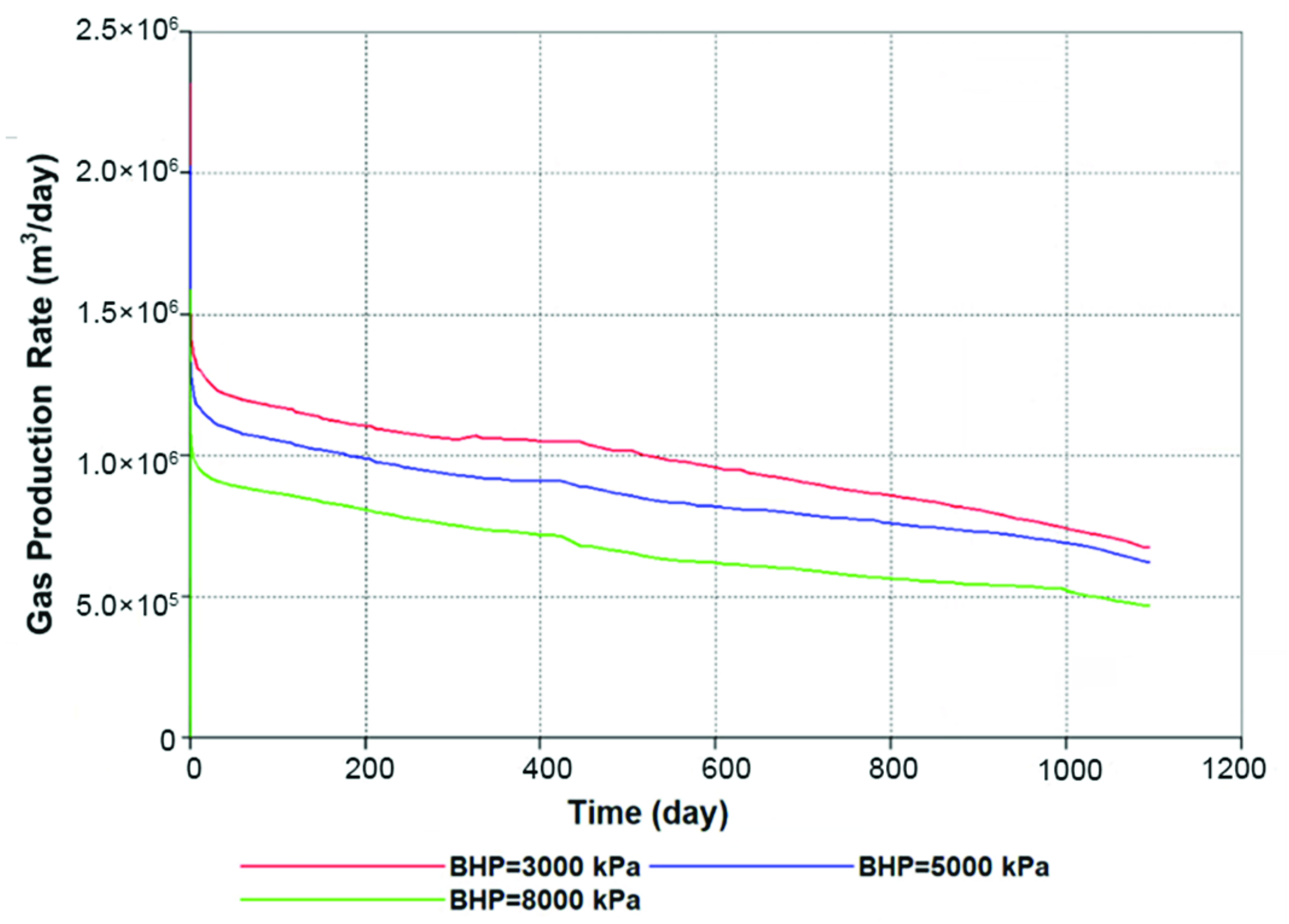

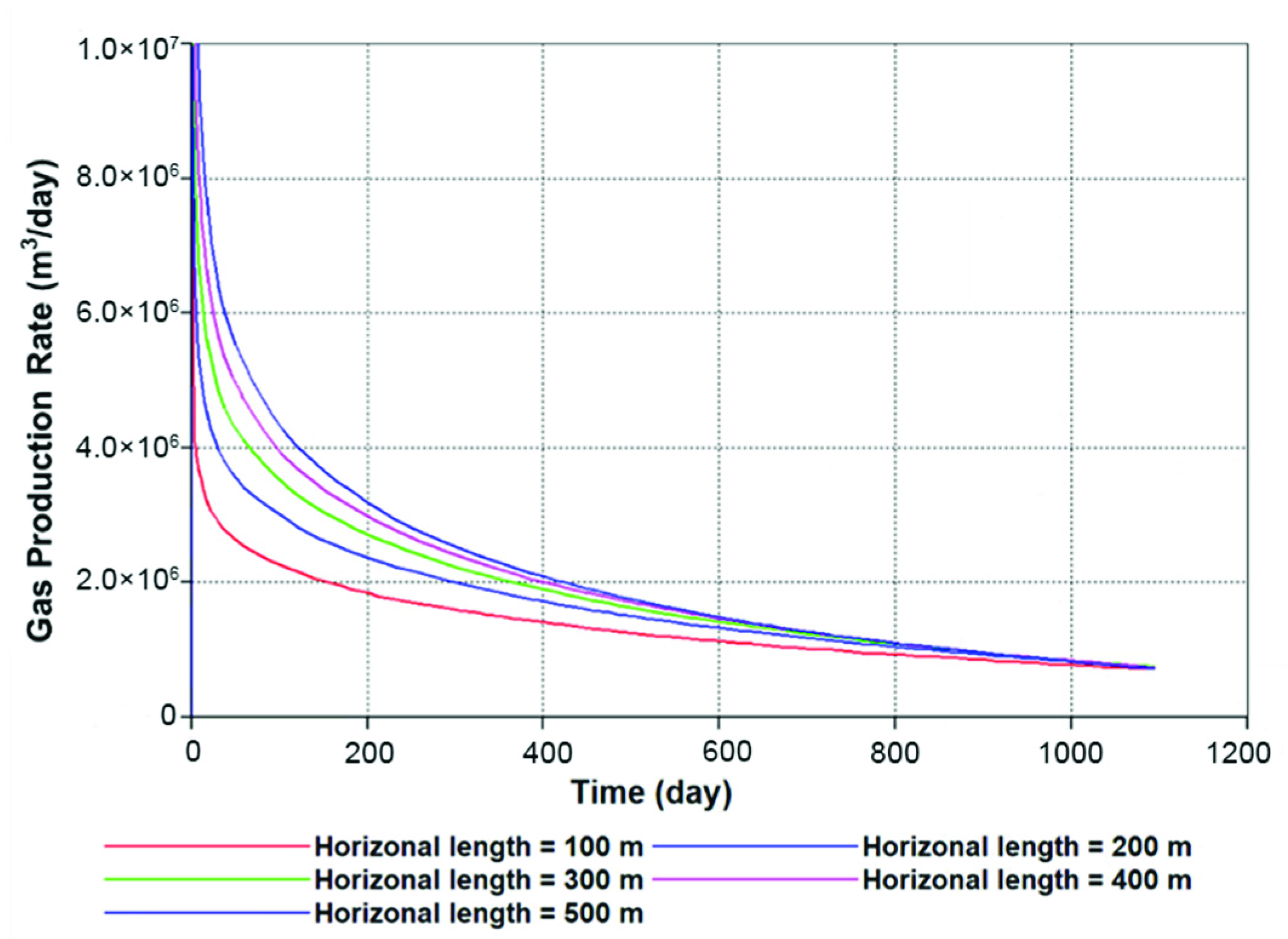
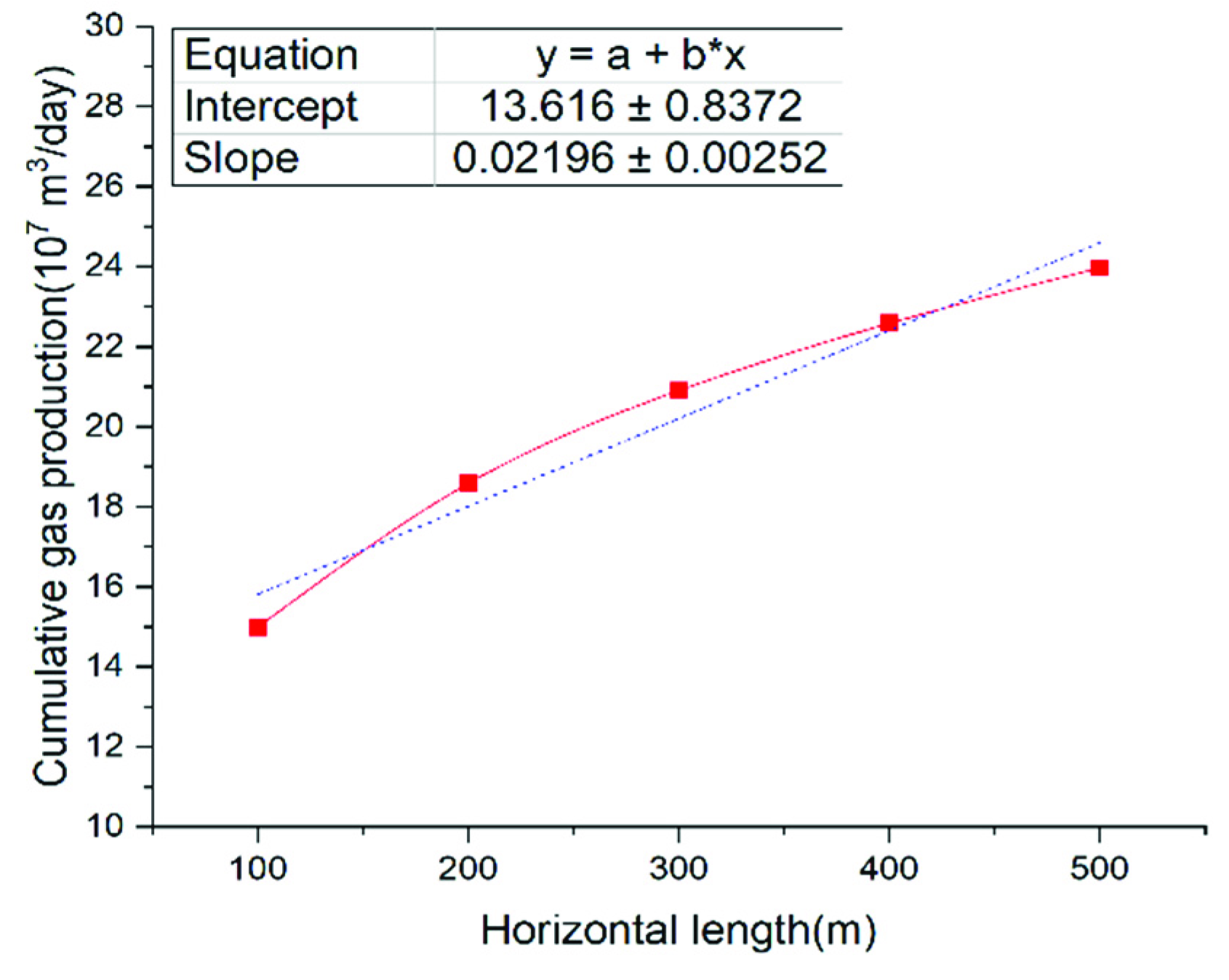

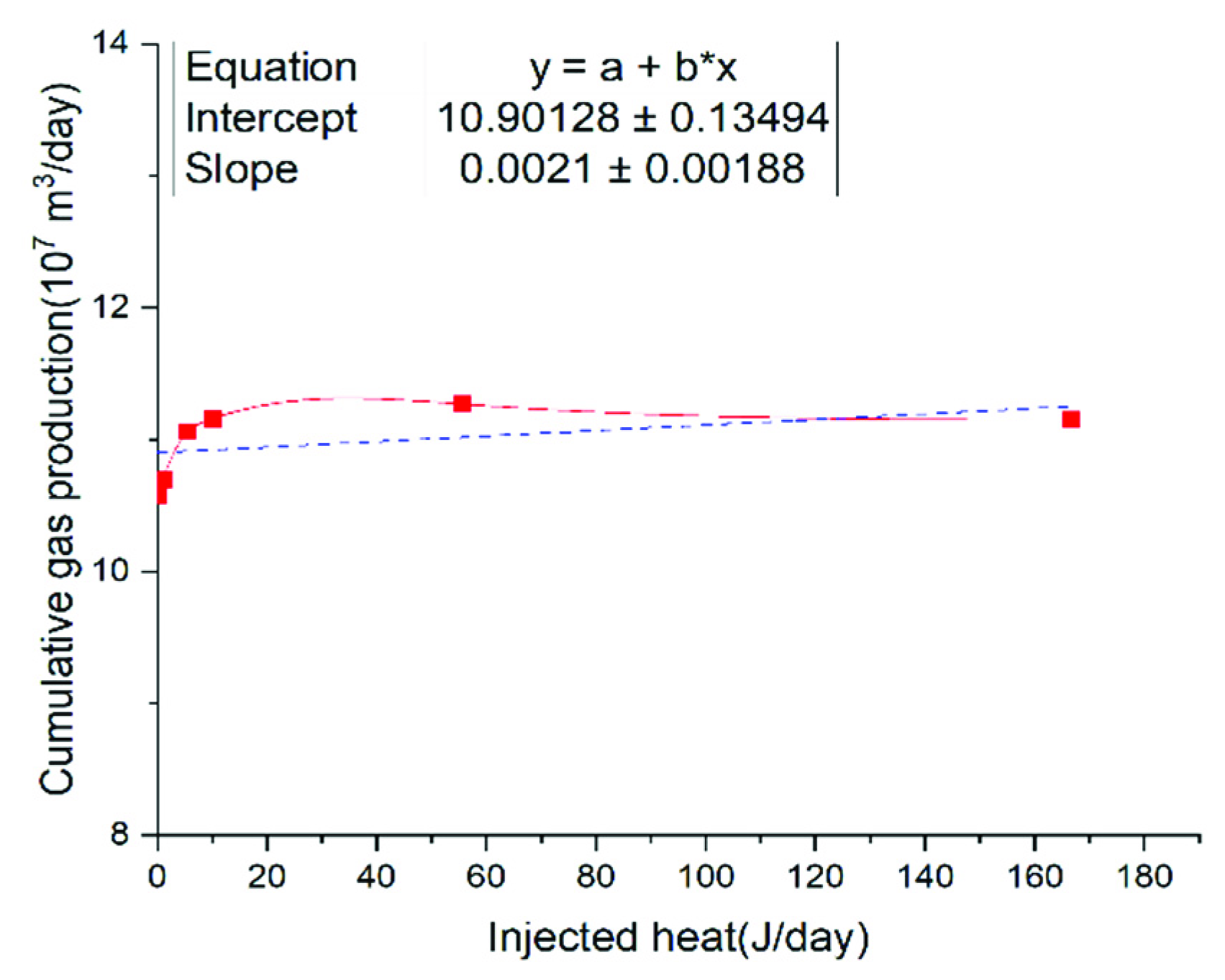
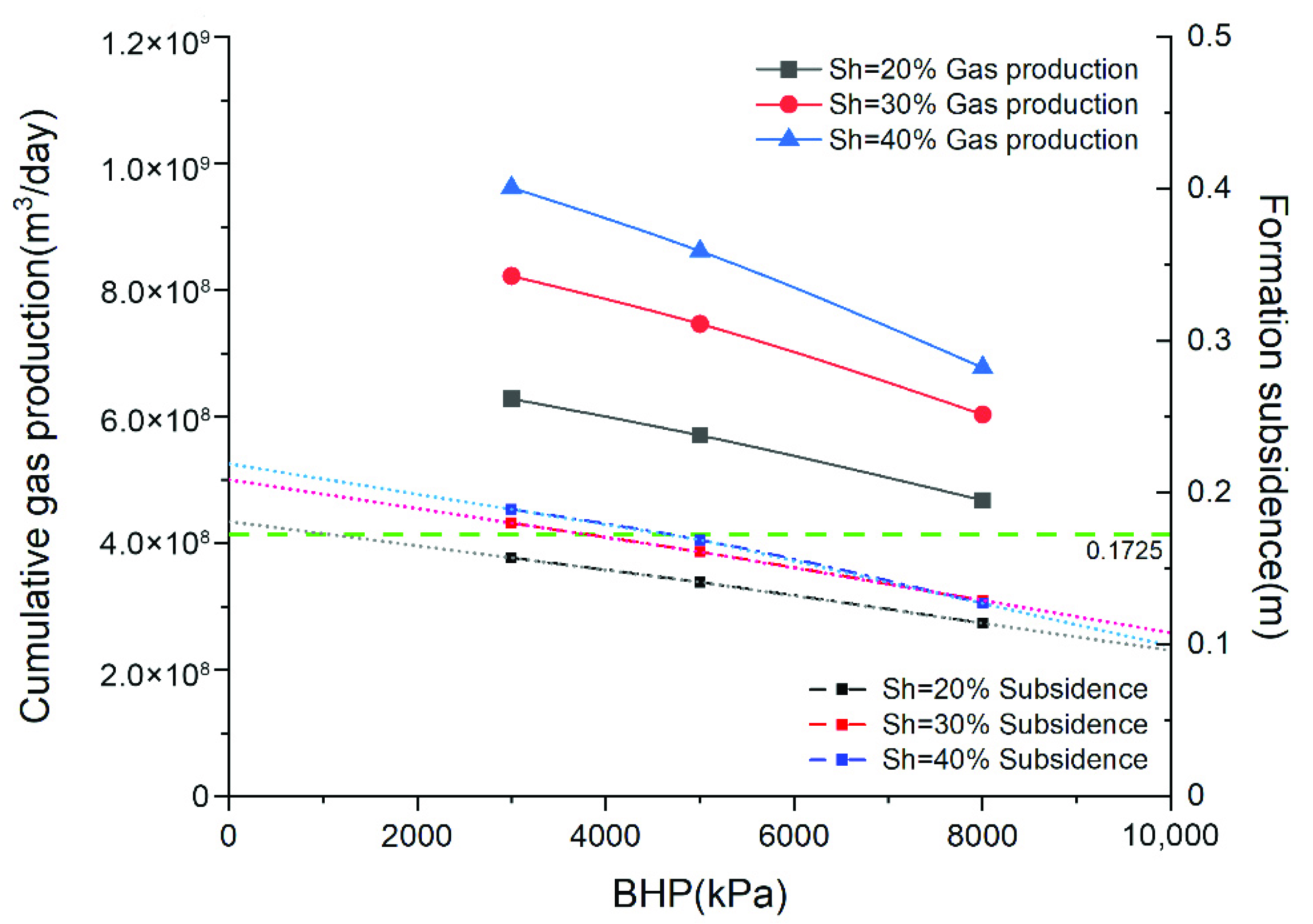
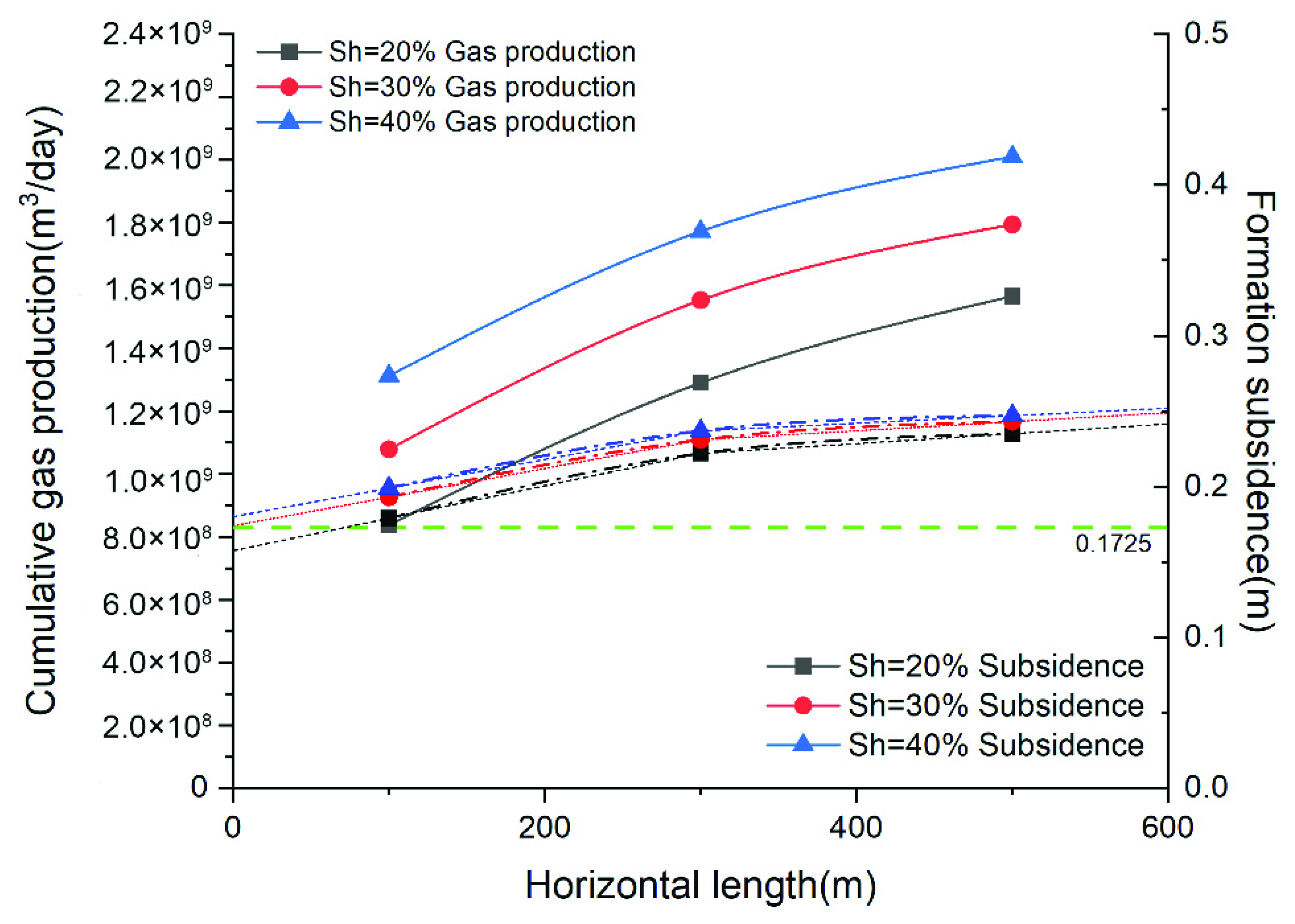
| Parameters | Value |
|---|---|
| Initial temperature, °C | 20 |
| Initial pressure, kPa | 19,000 |
| Thickness of hydrate, m | 50 |
| Thickness of underlying gas, m | 10 |
| Initial hydrate saturation | 0.4 |
| Initial water saturation | Hydrate layer = 0.6 |
| Underlying gas layer = 0.5 | |
| Initial gas saturation | Hydrate layer = 0 |
| Underlying gas layer = 0.1 | |
| Porosity | 0.4 |
| Permeability, Md | ki = kj = kk = 0.1 |
| Gas composition | 100% CH4 |
| Thermal conductivity of the sediments, J/(m·day·C) | 1.728 × 105 (constant) |
| Yield criterion | Mohr-Coulomb |
| Initial cohesion, kPa | 850 |
| Elasticity modulus, kPa | 3.6 × 106 |
| Poisson’s ration | 0.35 |
| Parameters | The Slope | Gas Production Sensitivity to the Parameters | |
|---|---|---|---|
| Formation parameters | Formation porosity | 0.1561 | Formation porosity > hydrate saturation > buried depth |
| Hydrate saturation | 0.0989 | ||
| Buried depth | 0.00794 | ||
| Production parameters | BHP | −0.6605 | BHP > horizontal length > injected heat |
| Horizontal length | 0.02196 | ||
| Injected heat | 0.0021 | ||
| Porosity | Hydrate Saturation | Production Method | Production Parameters | Critical Gas Production |
|---|---|---|---|---|
| 40% | 20% | Horizontal well | L ≤ 80 m | 7.7 × 108 m3/day |
| 30% | Vertical well | 7.92 × 108 m3/day | ||
| BHP ≥ 3800 kPa | ||||
| 40% | Vertical well | 8.7 × 108 m3/day | ||
| BHP ≥ 4800 kPa |
Publisher’s Note: MDPI stays neutral with regard to jurisdictional claims in published maps and institutional affiliations. |
© 2022 by the authors. Licensee MDPI, Basel, Switzerland. This article is an open access article distributed under the terms and conditions of the Creative Commons Attribution (CC BY) license (https://creativecommons.org/licenses/by/4.0/).
Share and Cite
Chen, Y.; Wu, S.; Sun, T.; Jia, S. Study of the Appropriate Well Types and Parameters for the Safe and Efficient Production of Marine Gas Hydrates in Unconsolidated Reservoirs. Energies 2022, 15, 4796. https://doi.org/10.3390/en15134796
Chen Y, Wu S, Sun T, Jia S. Study of the Appropriate Well Types and Parameters for the Safe and Efficient Production of Marine Gas Hydrates in Unconsolidated Reservoirs. Energies. 2022; 15(13):4796. https://doi.org/10.3390/en15134796
Chicago/Turabian StyleChen, Yuan, Shiguo Wu, Ting Sun, and Shu Jia. 2022. "Study of the Appropriate Well Types and Parameters for the Safe and Efficient Production of Marine Gas Hydrates in Unconsolidated Reservoirs" Energies 15, no. 13: 4796. https://doi.org/10.3390/en15134796
APA StyleChen, Y., Wu, S., Sun, T., & Jia, S. (2022). Study of the Appropriate Well Types and Parameters for the Safe and Efficient Production of Marine Gas Hydrates in Unconsolidated Reservoirs. Energies, 15(13), 4796. https://doi.org/10.3390/en15134796






